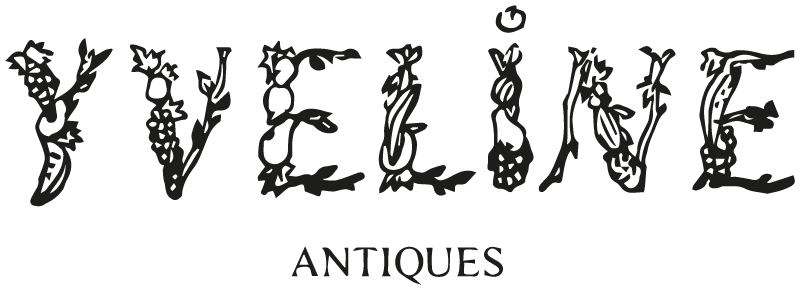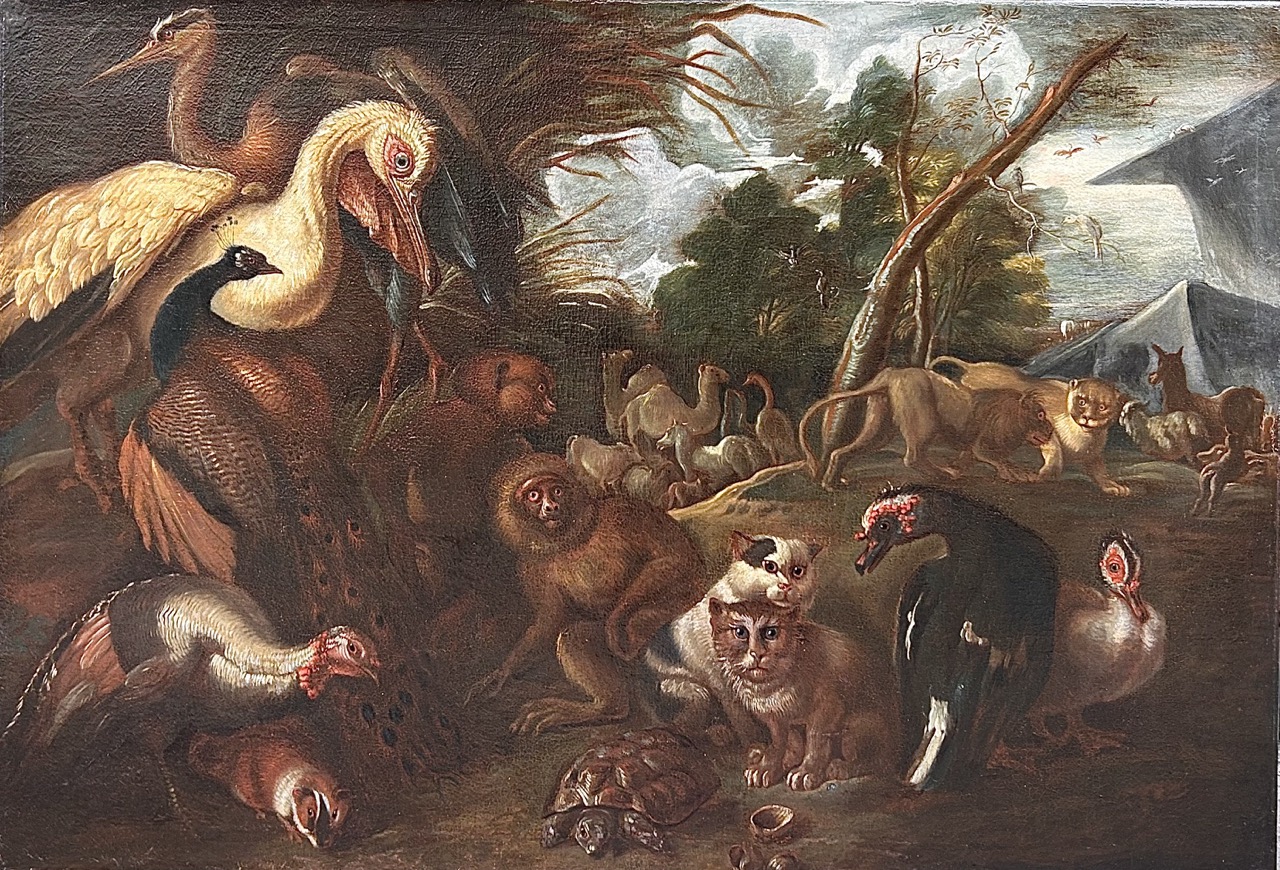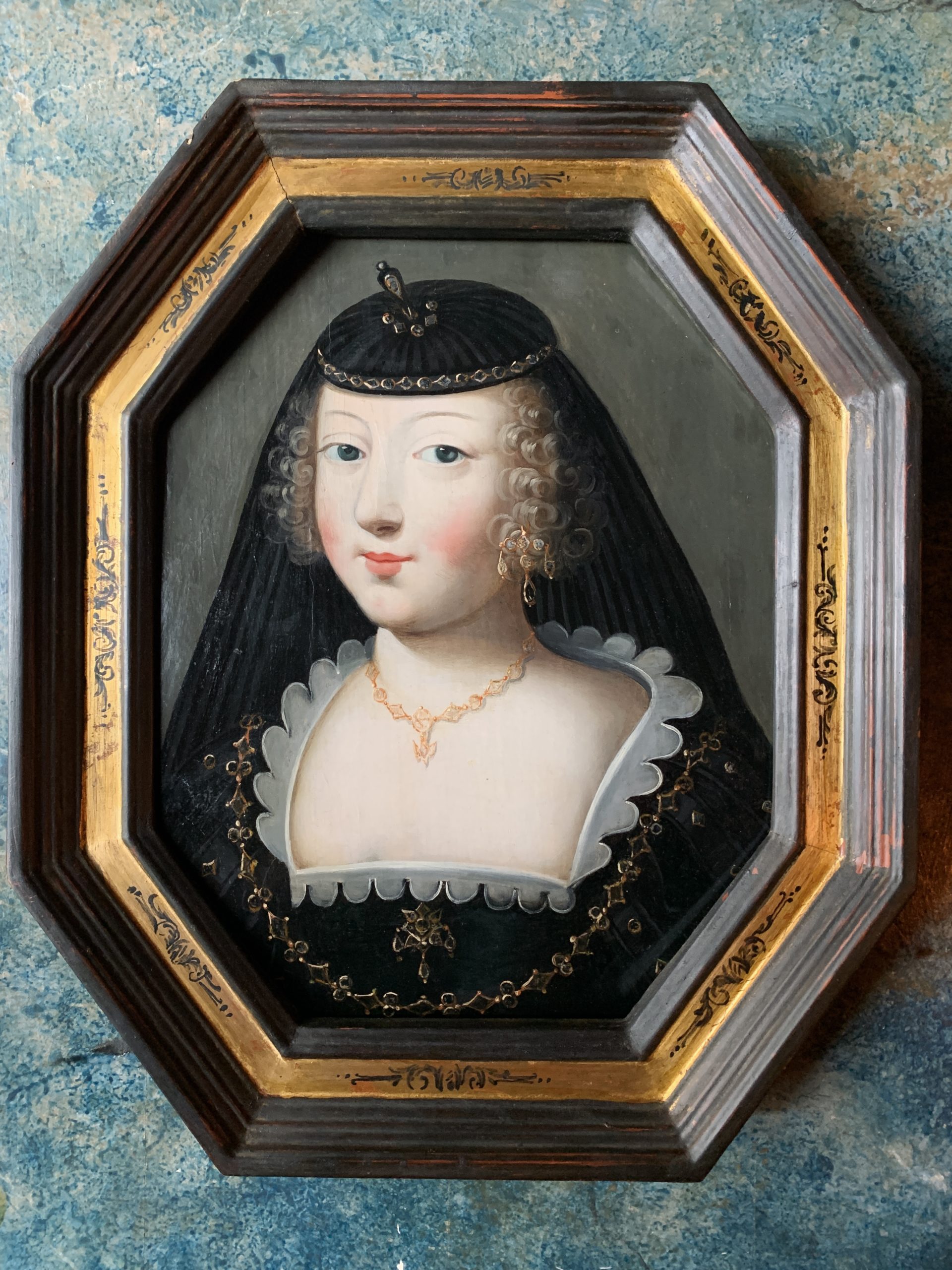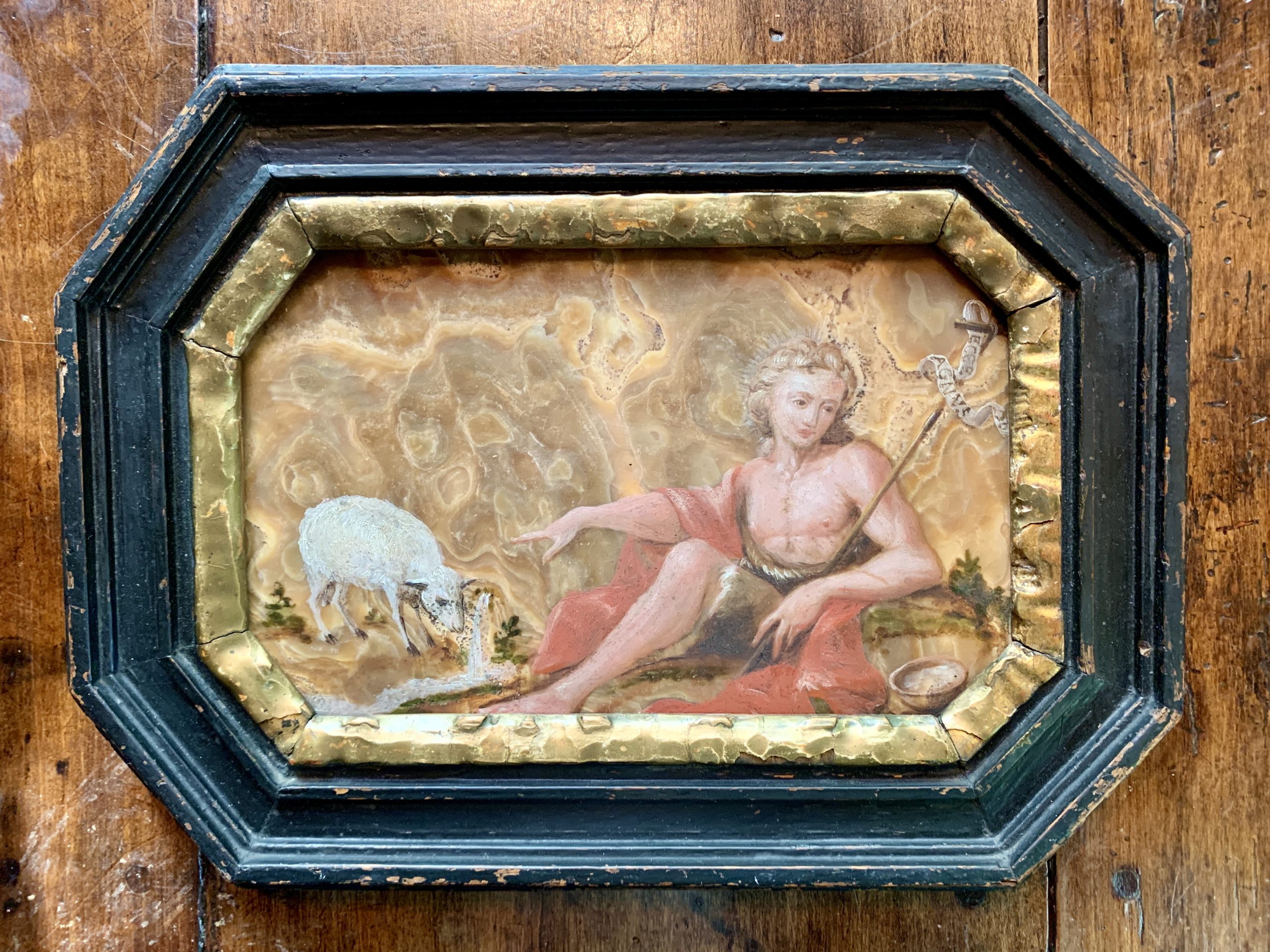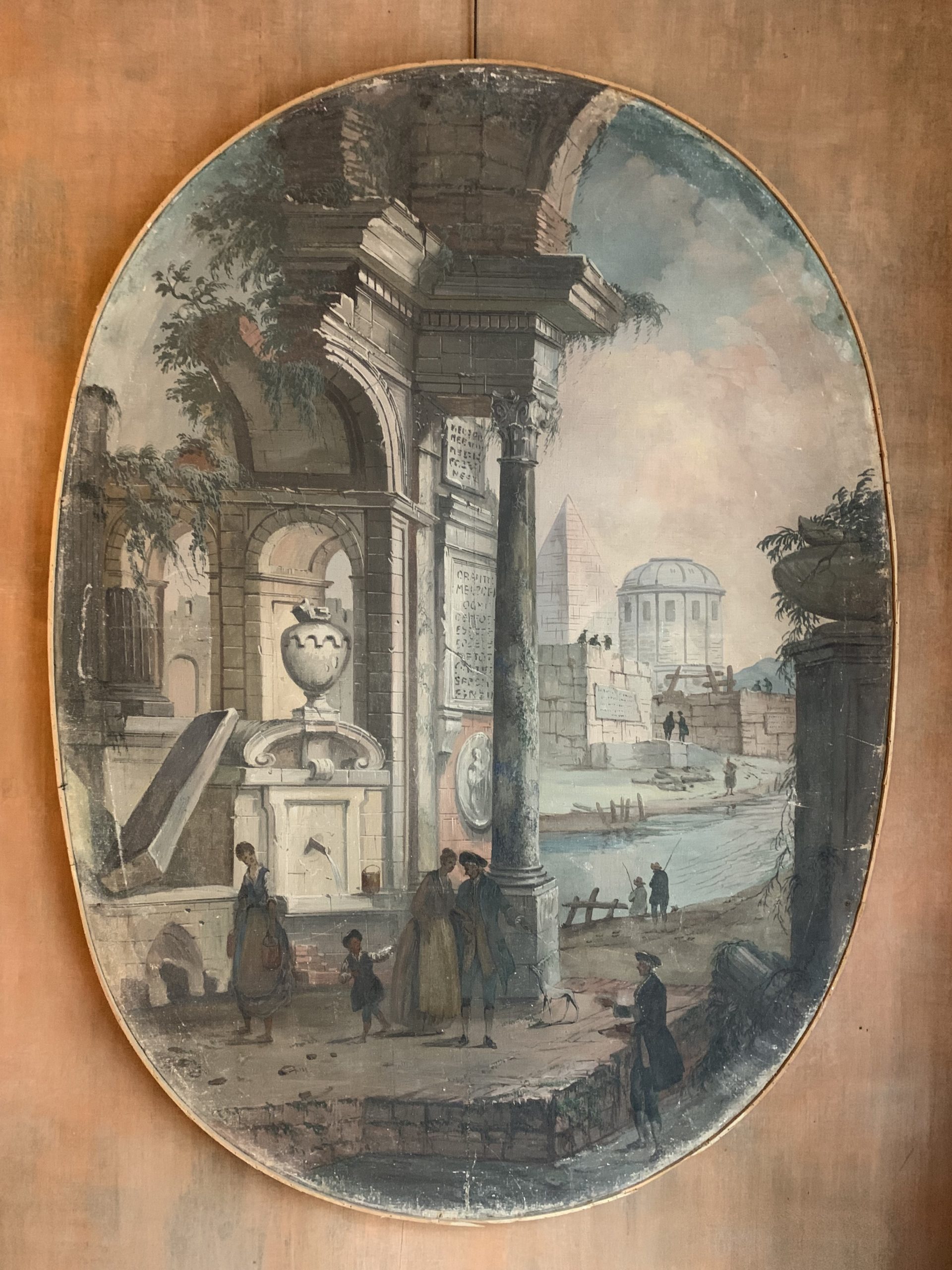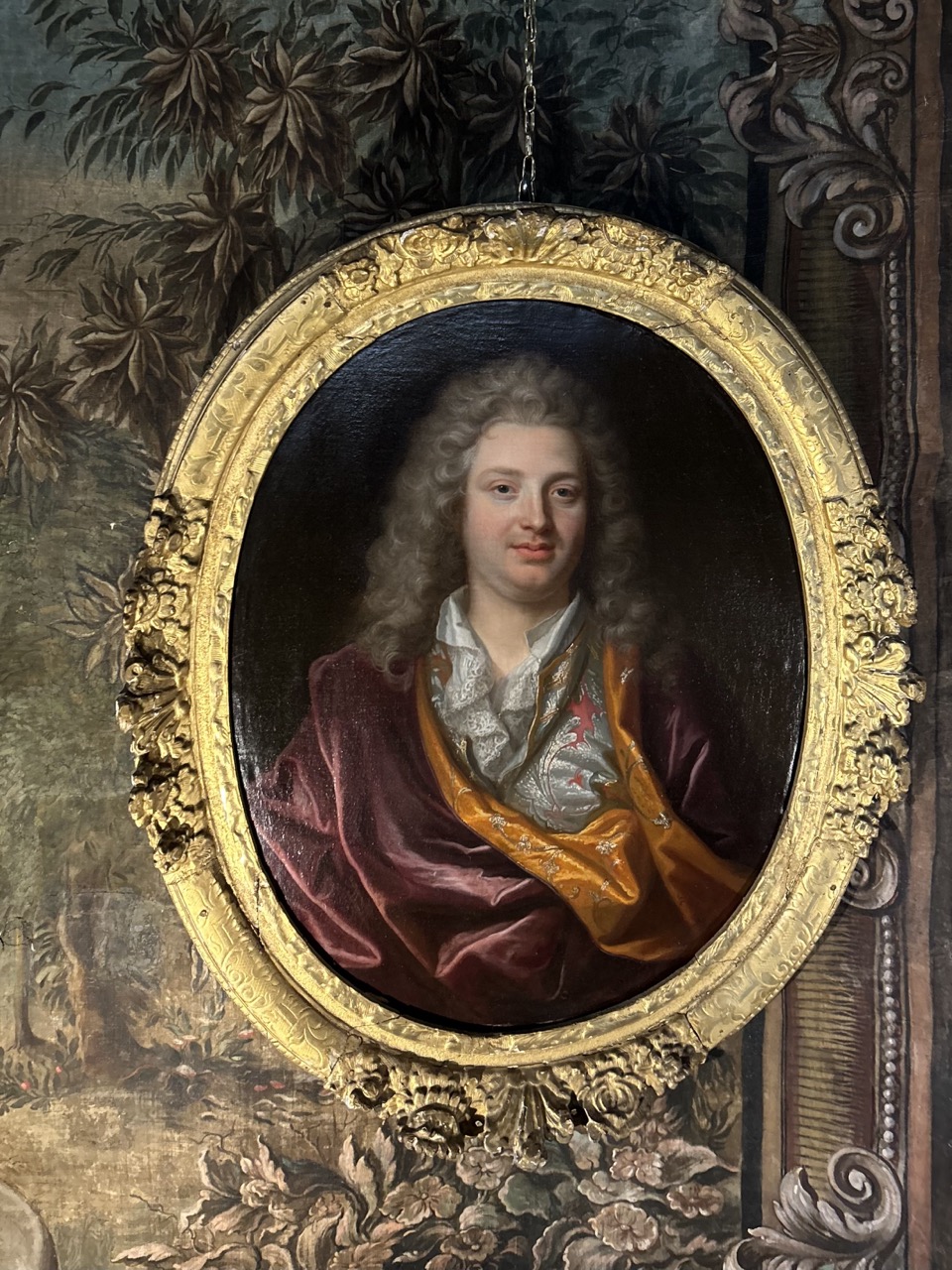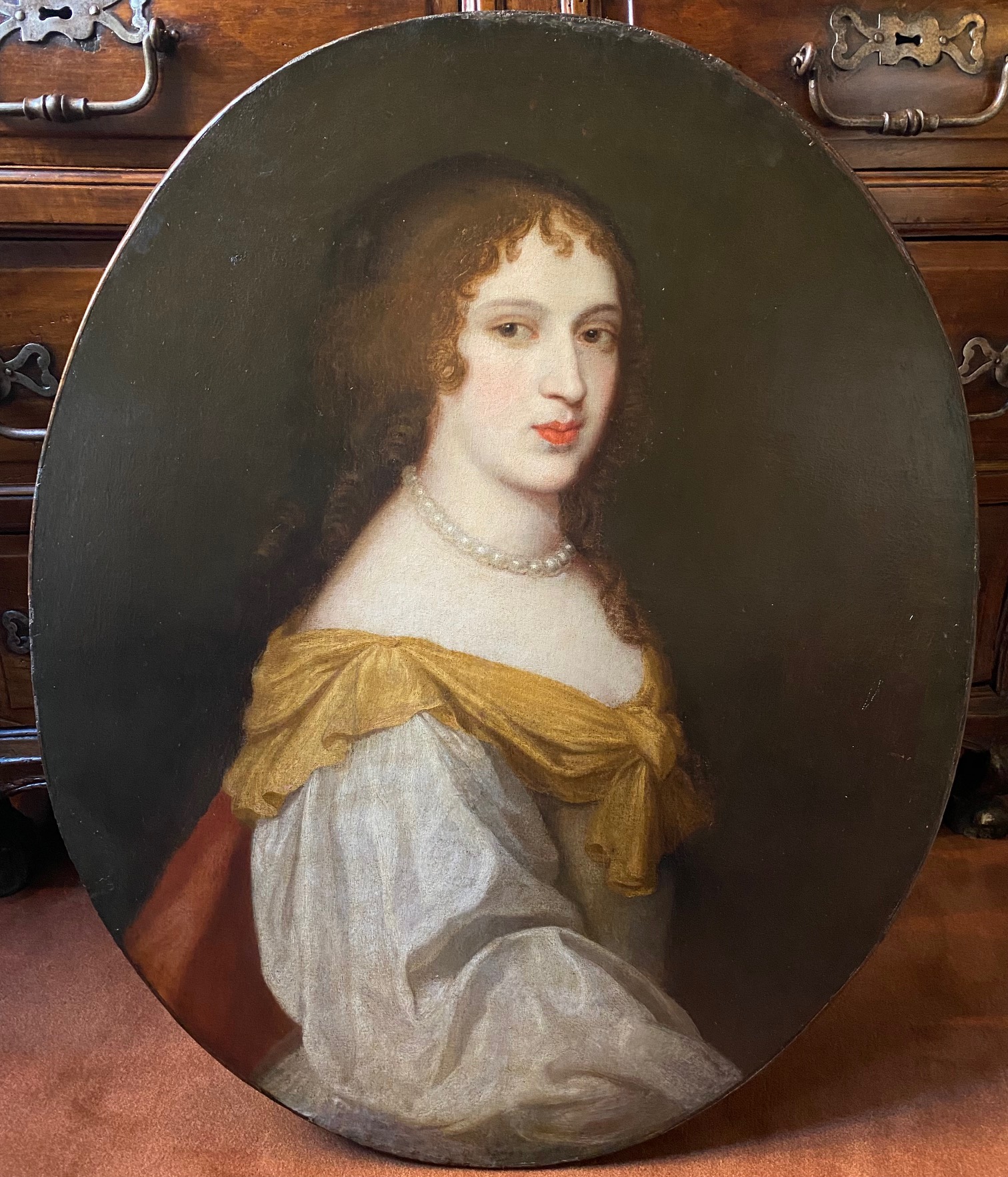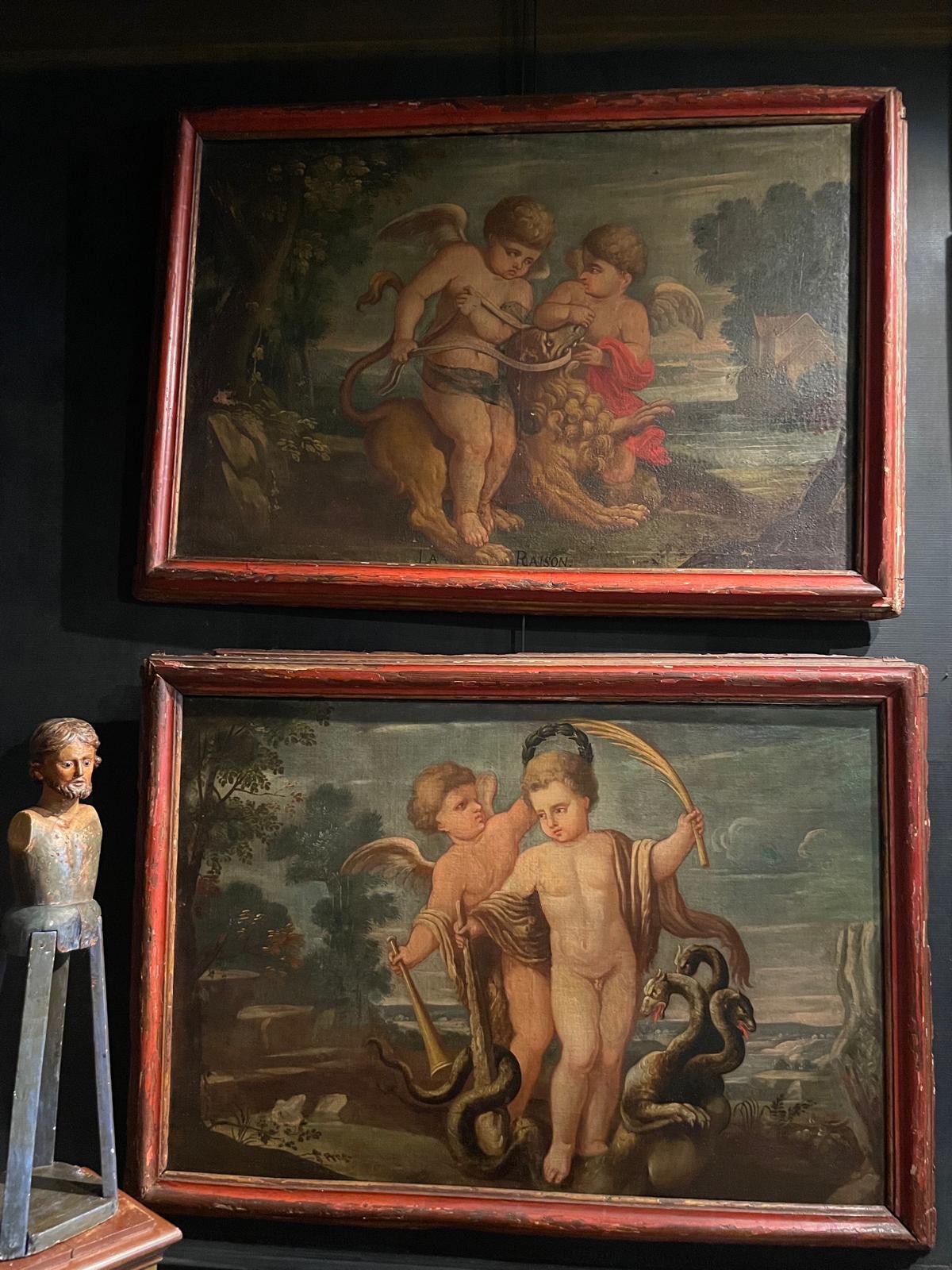Large oil on canvas representing Diane accompanied by her dog.
The Fontainebleau School is characterized by Italianism, a taste for abundant and refined ornamentation, symbolic references as well as a new sensuality – for France – in the representation of the body.
Through mythological figures capable of magnifying power, the artist represents the reality of his time. From the reign of Henri IV, a late Mannerist style developed, sometimes referred to as the “Second School of Fontainebleau”. This new era, however, stands out from the previous one, by its large number of artists of Flemish origin and by a more pronounced Nordic influence, which can be explained by the political circumstances of the time. Our painting belongs to this second period. The presence of the fly on the dog’s snout is very curious. This insect is never there by chance, it transcribes the virtuosity of the painter, capable of deceiving the eye, and its symbolism is complex. It is found in many paintings in the history of painting. The fly integrates us into the cycle of life, forces us to think of ourselves as flesh: fertilization and decay. On our table, its location raises questions, close to the snout, the line refers to Diane. Diana… a woman free from her chastity, a huntress who obtained from her father god the power to remain a virgin and free from men. A woman who will kill with refinement and cruelty those who attempt even a glance. Would the painter then want to associate this symbol with the villainy of the insect, a desire for independence difficult to formulate as it is so anachronistic, the very idea of this feminine ambition reduced to decay? Diane fights with all her grandeur and magnificence.
Height: 200 cm
Width: 142 cm
Circa 1580-1600
Fontainebleau School
